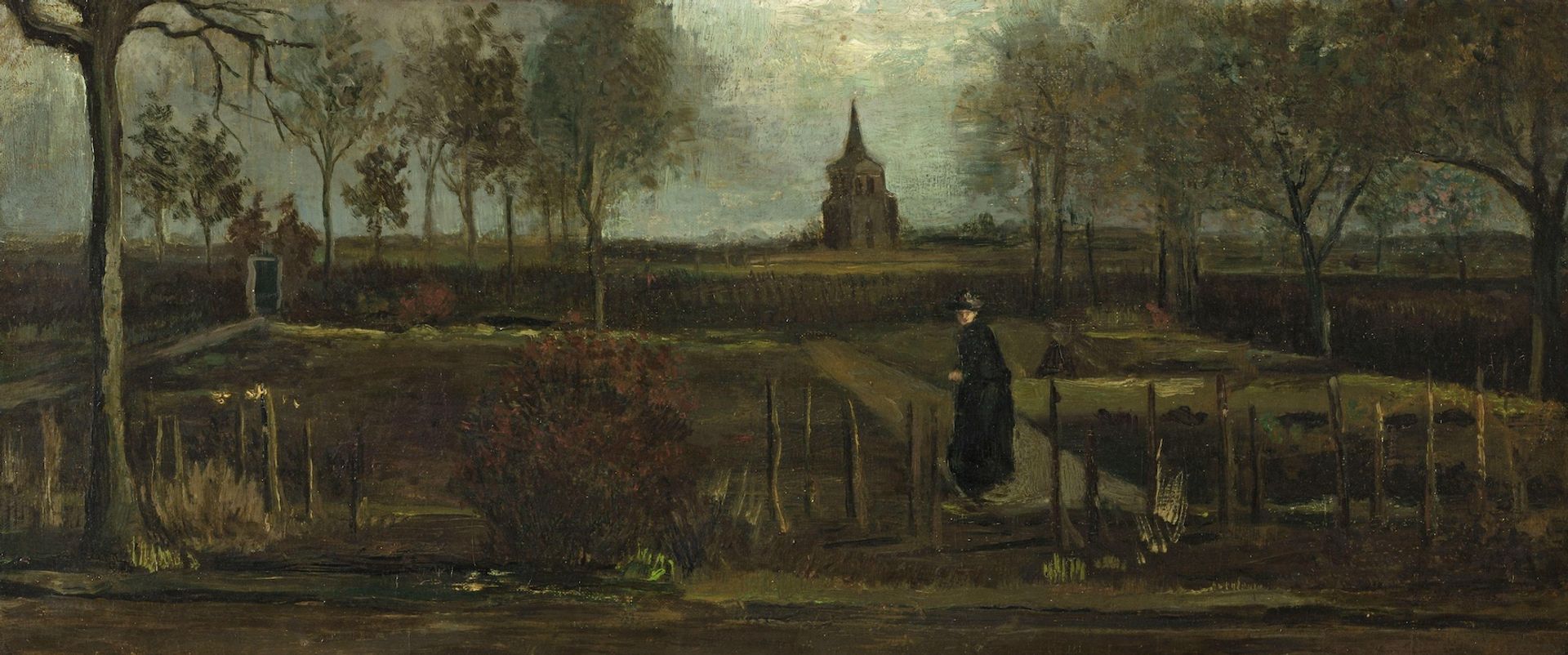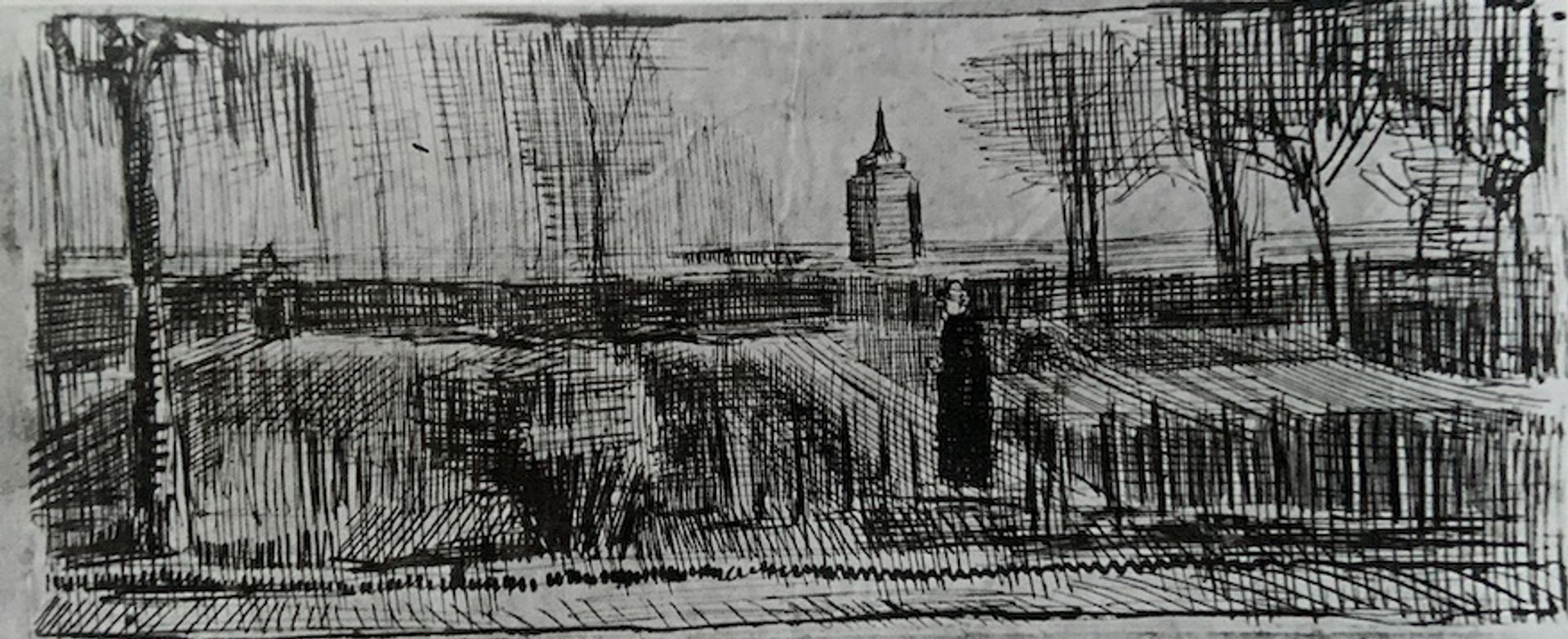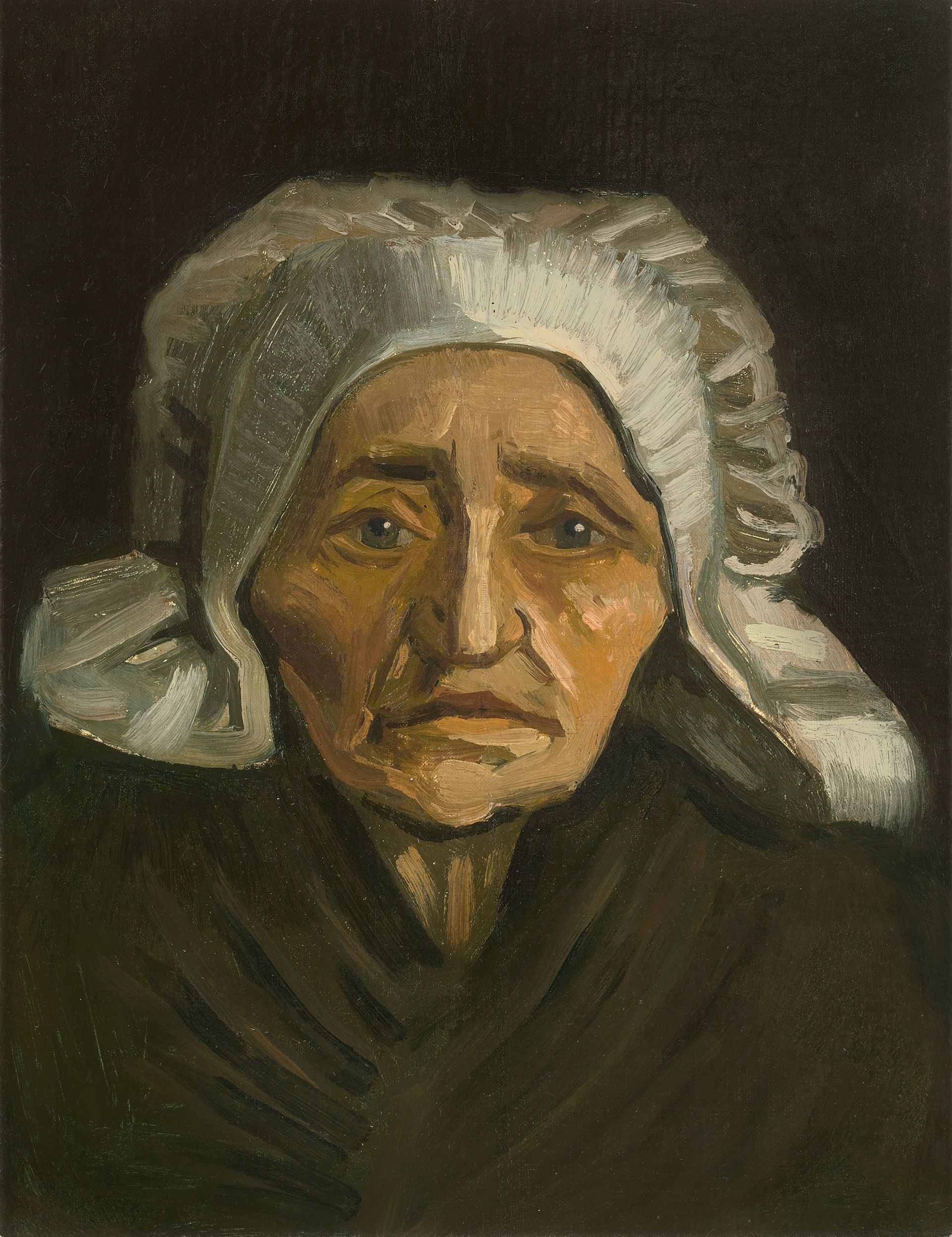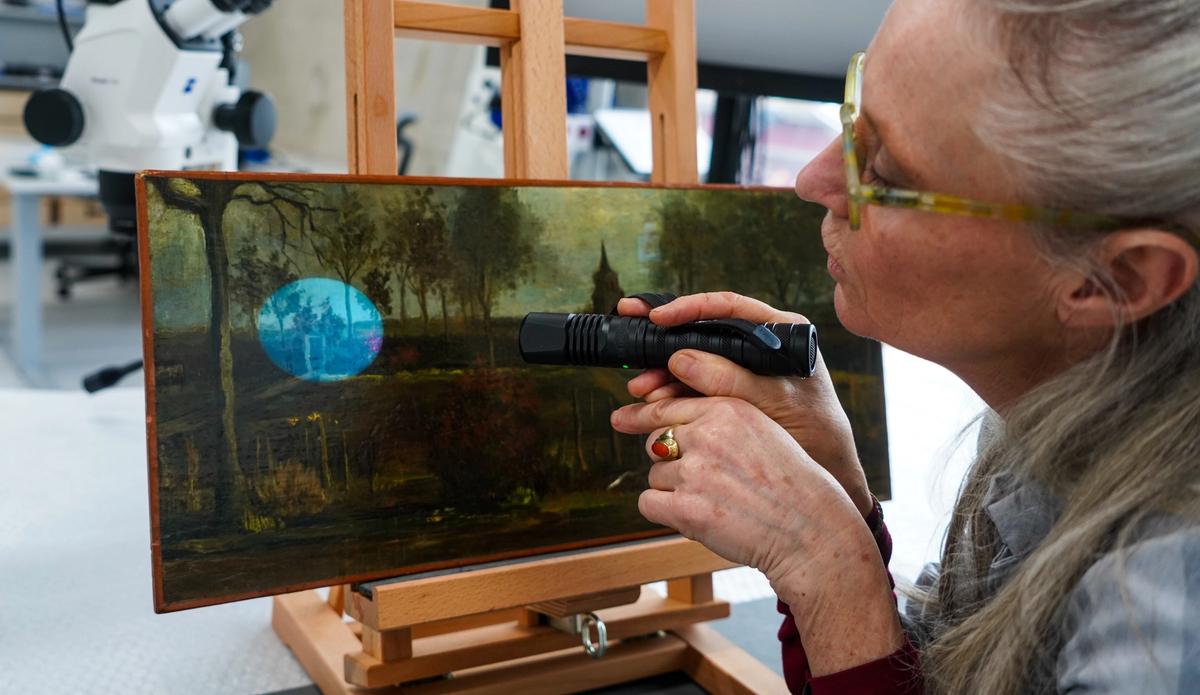Van Gogh’s The Parsonage Garden at Nuenen in Spring (March 1884) was seized in a nighttime smash-and-grab raid in 2020 from an exhibition in Laren, just east of Amsterdam. It had been on loan from the Groninger Museum, where it has been one of the stars of the collection since its acquisition in 1962. The Van Gogh landscape was insured for €2.5m.
Last September the painting was dramatically recovered by the Dutch private art detective Arthur Brand, as a result of his contacts with an intermediary who had links to the criminal underworld. The painting was delivered to Brand’s Amsterdam home in a blue plastic Ikea bag.

Dutch art detective Arthur Brand with Van Gogh’s The Parsonage garden at Nuenen in Spring, a few minutes after its recovery on 11 September 2023
Arthur Brand, Amsterdam
By good fortune, the Van Gogh picture has survived remarkably well, partly because it was mounted on an oak board. Before the latest examination it had always been assumed that it had been painted on paper (affixed to the board), but conservator Marjan de Visser immediately spotted that it is on linen. Surprisingly, this basic fact had apparently not been realised earlier.
De Visser found some damage and scratching to the old varnish coating, occasionally penetrating through the paint layer to the white ground (one such place is just below the figure of the woman). The remaining varnish is likely to be removed, although a final decision has yet to be made. Losses will be retouched, so they will be hardly noticeable.

A pre-theft photograph of Van Gogh’s The Parsonage Garden at Nuenen in Spring (March 1884)
Groninger Museum, Groningen
The landscape, painted in Van Gogh’s early, dark tones, was created when he was living with his parents in the village of Nuenen, in the south of the Netherlands. It depicts the back garden of his father’s parsonage, with the tower of the old church in the distance. The figure of a woman, dressed in black, is shown walking away.
Van Gogh began the painting as a winter scene, also making an ink sketch in which the trees are bare. He had given the sketch, which he described as a “winter garden”, to his artist friend Anthon van Rappard. Soon afterwards, on 8 March 1884, he wrote to say that “it’s already a spring garden—by now. And it’s changed a lot.” In the painting he added foliage to the trees and even a little blossom.

Van Gogh’s sketch of The Parsonage Garden at Nuenen (February 1884)
Private collection
De Visser has just completed her preliminary investigations into the recovered painting. It can now be seen for a short period in Rotterdam, in the conservation studio at the Boijmans van Beuningen Museum depot.
After that, it will be shown at the Groninger Museum in Groningen in a special display entitled 150 Years of the Groninger Museum: Behind the Scenes (29 March 2024-1 June 2025). The recovered Van Gogh will be presented so that the reverse is also visible, showing the damage. We can report that the Ikea bag will also be displayed, since this object is now part of the painting’s story. The actual restoration will probably begin early next year.
In the meantime, the Groninger Museum will be presenting a special exhibition, unrelated to the theft. The show, How Van Gogh Came to Groningen (30 November-5 May 2025), will recount the story of one of the earliest exhibitions on the artist, held in the city in 1896.
Other Van Gogh news:
- The Musee d’Orsay had an astonishing 794,000 visitors for its exhibition Van Gogh à Auvers-sur-Oise (3 October 2023-4 February 2024), after its earlier presentation at Amsterdam’s Van Gogh Museum. This is the largest number of visitors to a show at the Paris museum since it opened in 1986.
- A Van Gogh self-portrait (autumn 1887) is to come to National Museum Cardiff, on loan from the Musée d’Orsay. It will be on display from 16 March until 24 January 2025 in the exhibition Art of the Selfie.

Van Gogh’s Head of a Peasant Woman in a White Cap (December 1884)
M.S. Rau, New Orleans
- The New Orleans dealer M.S. Rau is offering an early Dutch painting, Head of a Peasant Woman in a White Cap (December 1884), for $4,950,000. The picture will be exhibited on their stand at the Tefaf Maastricht art fair (public days 9-14 March).




